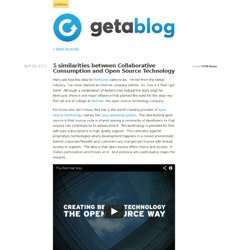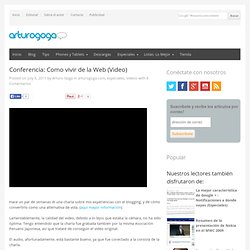

La ética del software libre. Post invitado: Este artículo ha sido escrito por Benjamí Villoslada, informático que se define a sí mismo como “bitólogo y todoista”.

Es co-fundador de meneame.net y colaborador habitual de diversos medios, donde suele tratar temas relacionados con Internet y el software libre. Podéis encontrar más información sobre Benjamí en su blog personal y en su perfil de twitter. Podéis leer la postura contraria redactada por Juan Quijano bajo el título Software Propietario y Open Source, formas de cambiar el mundo. El software libre es consecuencia del método de la ética, que consiste en estudiar la bondad o la maldad sin interesarse en otros aspectos o enfoques. El análisis de lo bueno y lo malo no es caprichoso; exige proporcionar las razones por las que ciertas conductas son buenas y por lo tanto dignas de realizarse. Si te molesta que digan que el software privativo es malo, no sigas leyendo. «La posibilidad más obvia era adaptarme a los cambios del mundo. Curso de especializaciónn en Aprendizaje y trabajo colaborativo en red (Universitat Oberta de Catalunya)
The Collective Evolution HD PART 1/8 - Intro. The Collective Evolution II: The Human Experience. The evolution of the web. Conciencia Colectiva. 5 similarities between Collaborative Consumption and Open Source Technology - Thoughts for Rent. Many ask how the idea for Rentcycle came to be.

I’m not from the rental industry. I’ve never started an Internet company before. So, how is it that I got here? Although a combination of factors truly helped the stars align for Rentcycle, there’s one major influence that planted the seed for the idea—my first job out of college at Red Hat , the open source technology company. For those who don’t know, Red Hat is the world’s leading provider of open source technology , namely the Linux operating system .
Working on the Brand Communications team at Red Hat, I was tasked with telling this story of shared access to the masses. After three wonderful years evangelizing Red Hat’s mission and values, I moved cross-country to San Francisco. 1. Red Hat always preaches, “Your mother was right. Collaborative Consumption (CC) takes a similar stance by promoting access to shared resources. Knowledge is not mine, not yours. Only the arrangement is ours. To be clear, we do think intellectual property is important, and we’re sure that relevant mind creations have to be recognized. But we’re talking about something different here. Think about 90% of the things you do in your day-to-day life. In most of them, you’re creating, contributing, or improving —the know-how gathered through experience. Think about self-directed learning and how you throw yourself into a quest for specific knowledge on the internet.
You capture knowledge, add your takes, and form an opinion. One of the questions people ask us is why people would help Ledface if there’s no glory involved? Most of us don’t even notice how much cultural knowledge we have and how it is. Ledface has a very specific goal: to enable people to tap into collective intelligence to solve their day-to-day problems. Ledface – Our Vision of Collective Intelligence. Infographic: Building Success in a Connected World. Last weekend I was musing about the elements of success in a connected world.

Something clicked, and I was able to pull out of it a visual representation as below. For my keynote tomorrow morning on Building Business in a Connected World I will just run through this diagram together with commentary on how to approach each of the key elements. Click on the image for full size This diagram brings together the foundations of success in a connected world: Relationships, Visibility, and Execution, and how to achieve these.EXECUTION Cloud: Using distributed computing as a platform for businessCrowd: Using distributed talent to get work done. VISIBILITY Create: Creating useful, relevant content that gets seen by the right audience.Curate: Selecting useful, relevant content to create value and build an identity and brand. Clearly the 6 elements are not distinct – they are deeply inter-related. The services mentioned are examples – of course many more could be mentioned for each category. Las habilidades del futuro.
TEDxSydney - Rachel Botsman - Collaborative Consumption Author Presents Compelling Case for 21C. Clay Shirky: How cognitive surplus will change the world. Conferencia: Como vivir de la Web (Video) Hace un par de semanas di una charla sobre mis experiencias con el blogging, y de cómo convertirlo como una alternativa de vida.

(aquí mayor información) Lamentablemente, la calidad del video, debido a lo lejos que estaba la cámara, no ha sido óptima. Tengo entendido que la charla fue grabada también por la misma Asociación Peruano Japonesa, así que trataré de conseguir el video original. El audio, afortunadamente, está bastante bueno, ya que fue conectado a la consola de la charla. La experiencia fue bastante interesante, sobre todo por lo diferente que era el público.
La de esta oportunidad, como era abierta para todo público, tenía que tener otro tono diferente: todo tenía que ser simplificado para: a) demostrar que es bastante sencillo, con las herramientas actuales, lanzar un website y b) motivar a las personas a que lo hagan.